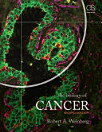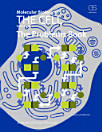Thermobiology
J.S. Willis
apr. 1997 · Advances in Molecular and Cell Biology Cartea 19 · Elsevier
Carte electronică
292
Pagini
family_home
Eligibilă
info
reportEvaluările și recenziile nu sunt verificate Află mai multe
Despre această carte electronică
Notwithstanding widespread studies and even several biological journals devoted to temperature, it is difficult to perceive a field of thermobiology as such. Interest in the effects of temperature of biological systems is fragmented into specific thermal ranges and often connected with particular applications: subzero cryobiology and preservation of cells and tissues or survival of poikilotherms, para-zero cryobiology and preservation of whole organs and survival of whole animals, intermediate ranges and physiological adaption and regulation, high temperatures and use of heat for killing cancer cells, very high temperatures and limits of biological structure. Yet it has not always been so, and there are good reasons why it need not remain so. General and comparative physiologists such as W.J. Crozier, H. Precht, J. Belehradek, F. Johnson, C.L. Prosser, and others have sought throughout this century to lay foundations for unified approaches to temperature in biological systems.Recent findings also serve to suggest principles and processes that span the range of temperatures of biological interest. Microviscosity of membranes is an issue originally of interest to low temperature biologists but with relevance to limiting high temperatures; conversely for protein structure. Certain "heat shock proteins" now appear to be responses to generalized stress, including low temperature.Inevitably, the chapters of this book reflect the "zonal" character of thermobiology: two chapters (by Storey and Raymond) deal with protection against subfreezing temperatures; three (Hazel, membrane structure, Dietrich, microtubular structure, and Kruuv, cell growth) deal with the effects of and modulation to cool-to-moderate superfreezing temperatures, one (Willis) with modulation (of membrane ion transport) to moderate-to-high temperatures and two (Li, heat shock proteins and Lepock, proteins in general) with stressfully high temperatures. Explicit in each of these chapters, however, are principles and issues that transcend the parochialism of the temperature range under consideration.
Evaluează cartea electronică
Spune-ne ce crezi.
Informații despre lectură
Smartphone-uri și tablete
Instalează aplicația Cărți Google Play pentru Android și iPad/iPhone. Se sincronizează automat cu contul tău și poți să citești online sau offline de oriunde te afli.
Laptopuri și computere
Poți să asculți cărțile audio achiziționate pe Google Play folosind browserul web al computerului.
Dispozitive eReader și alte dispozitive
Ca să citești pe dispozitive pentru citit cărți electronice, cum ar fi eReaderul Kobo, trebuie să descarci un fișier și să îl transferi pe dispozitiv. Urmează instrucțiunile detaliate din Centrul de ajutor pentru a transfera fișiere pe dispozitivele eReader compatibile.







